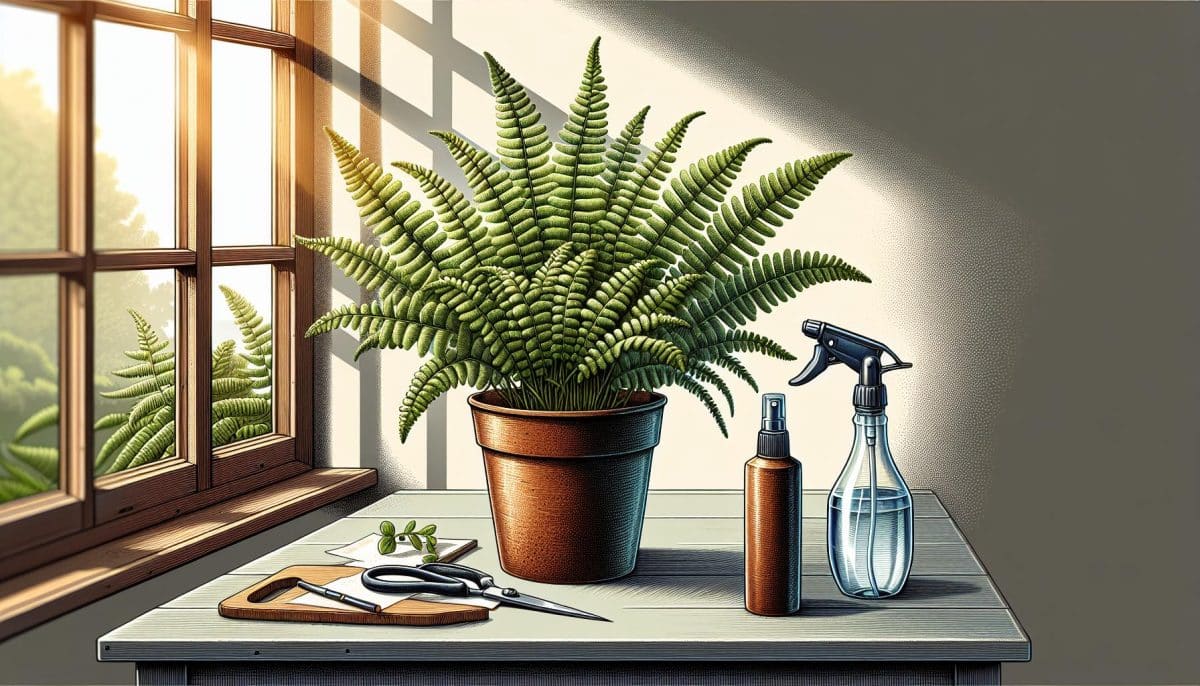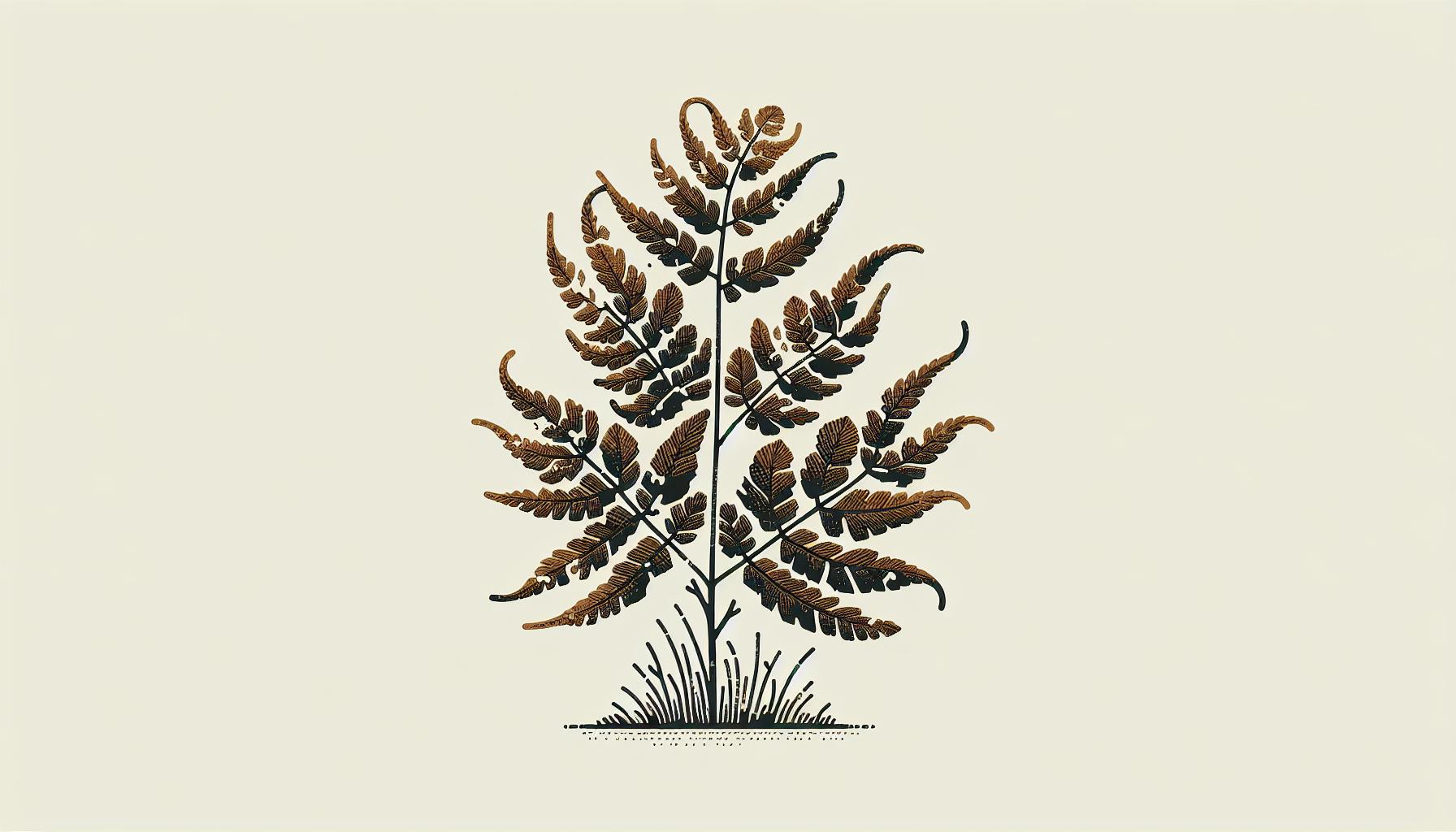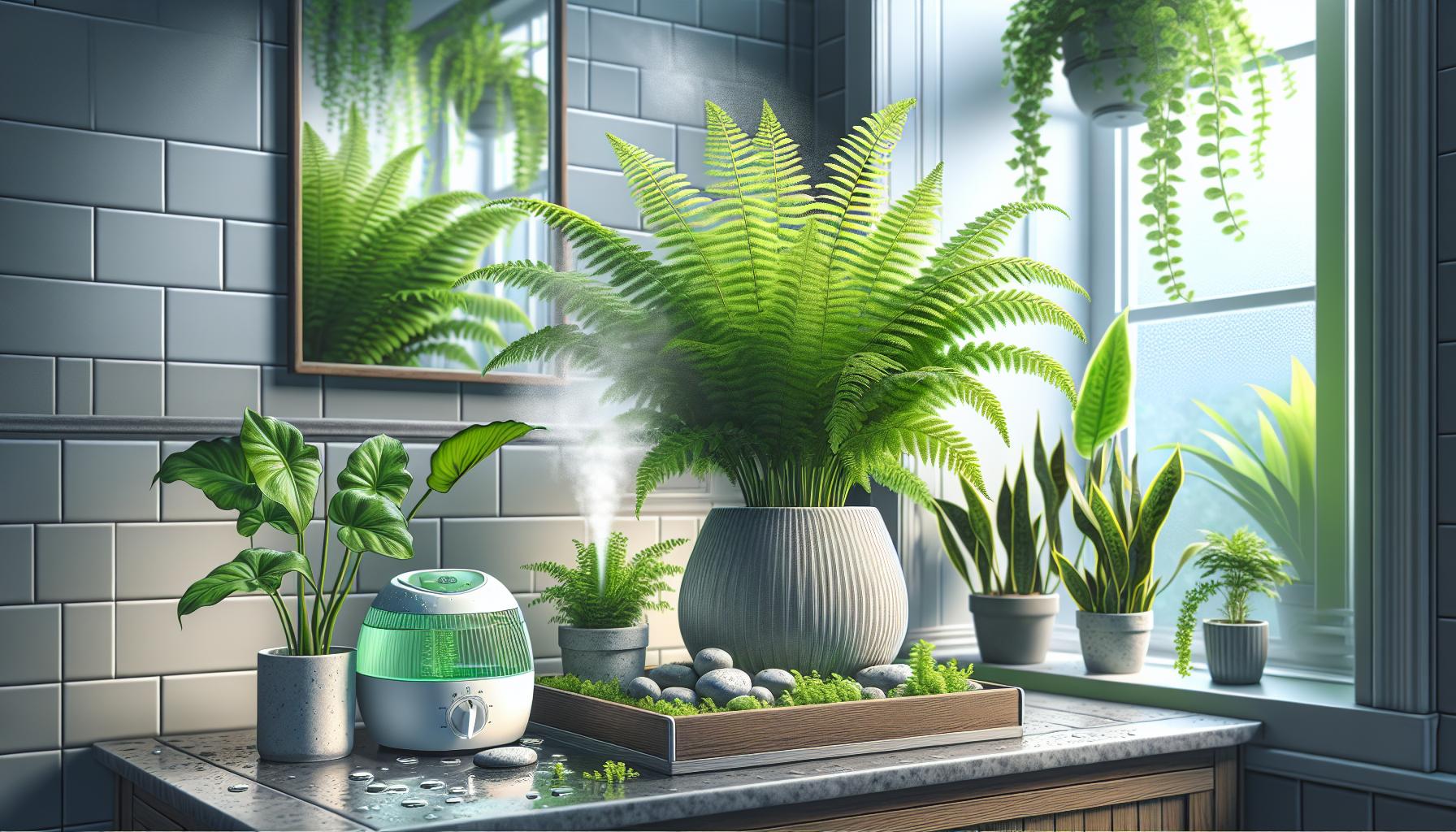
Ever noticed your fern’s once lush green leaves turning brown and crispy? It’s a common issue for fern enthusiasts and often a sign that your plant isn’t getting the care it needs. Understanding the delicate balance of moisture, light, and nutrients is key to keeping your fern thriving.
Whether it’s too much sun or not enough humidity, pinpointing the cause of your fern’s distress is the first step to revival. Stick around to uncover the common culprits of crispy fern syndrome and how you can restore your plant’s vitality.
Understanding the Needs of Ferns
When you notice your fern’s leaves turning brown and crispy, it’s crucial to assess whether you’re meeting its fundamental requirements. Ferns are ancient plants that have thrived for millions of years, but they can be quite particular about their environment.
Lighting Conditions play a vital role in the health of your fern. These plants prefer bright, indirect sunlight. Direct sun exposure can scorch their delicate leaves, leading to that undesirable crispiness. Ideally, place your fern in a north-facing window or somewhere it can receive diffused light.
Moisture Levels are another critical factor. Ferns originate from habitats with high humidity, so your home might be drier than they like. Ensure the soil remains consistently damp, but not waterlogged, as this can cause root rot. Frequent misting or a pebble tray filled with water are great ways to boost humidity around your fern without overwatering.
Lastly, Nutrient Intake should be closely monitored. Over-fertilizing can burn the foliage, while under-fertilizing leads to poor growth and vitality. Use a balanced, water-soluble fertilizer during the growing season, typically diluted to half the recommended strength.
By adjusting the environment to meet these conditions, you often can nurse a crispy fern back to lush, green health.
Common Causes of Crispy Fern Syndrome

When caring for ferns, noticing the leaves turning crispy is a clear sign that something is amiss in their environment. It’s essential to identify the root causes to take corrective action.
Improper Watering is often the culprit behind your fern’s distress. Your fern demands a consistent moisture level, which means neither too dry nor too saturated. If you violate this balance, you risk the health of your plant.
Low Humidity also wreaks havoc on ferns. These plants are native to humid climates and require a certain level of air moisture to thrive. Homes with dry air, often the case in winter months, can lead to your fern’s leaves drying out and becoming brittle.
Excess Heat and Sunlight can scorch the delicate fronds of your fern. Direct sunlight and proximity to heat sources, such as radiators or stoves, can rapidly dehydrate the plant and cause it to crisp up.
Chemical Burns from fertilizers or water contaminants should not be overlooked. Over-fertilization can lead to a buildup of chemicals in the soil, damaging the roots and leaves. Similarly, tap water, particularly if it’s high in chlorine or fluoride, can harm sensitive fern species.
To determine the specific cause affecting your fern, take a close look at:
- Your watering routine; adjust to maintain even soil moisture
- The humidity levels in your fern’s surroundings; consider using a humidifier or a pebble tray to raise the humidity
- The amount of light and heat your fern receives; relocate if necessary to a shadier spot
- The type and frequency of fertilizer application; opt for a gentle, organic fertilizer, applying as recommended
Addressing these common issues can vastly improve the health and appearance of your fern, helping you enjoy the lush greenery of your indoor garden for longer.
Too Much Sun: The Sunburned Fern
Have you ever noticed your fern’s fronds displaying a bleached, pale colour, or perhaps even a scorched appearance? It’s highly likely your plant’s suffering from too much exposure to direct sunlight. Ferns are inherently shade-loving plants, and their delicate fronds can be easily damaged when subjected to the harmful rays of the sun.
Bright, Indirect Light is the Key:
- Position Your Fern where it can receive bright but indirect sunlight.
- Consider North-facing or East-facing windows as ideal spots.
- If Your Fern Must Be Placed Near a South or West-facing window, use a sheer curtain to diffuse the light.
Real-life evidence demonstrates that ferns placed in South-facing windows without protection often exhibit dry, brown patches on their leaves. This is a typical symptom of “sunburn,” akin to the damage the human skin endures when unprotected in the sun.
Avoiding Direct Sunlight Prevents Crispy Leaves:
- Shield Your Fern from the midday sun when it’s at its most intense.
- Watch for Signs like bleaching or dryness as early indicators of too much sun.
By monitoring your fern’s response to its lighting environment and adjusting accordingly, you’re taking a crucial step in preserving its lush, green vitality. Remember that even within your home, lighting conditions change with the seasons, so remain attentive and be prepared to relocate your fern as necessary.
Not Enough Humidity: The Dehydrated Fern

Ferns thrive in high humidity environments; your home’s dry air isn’t always conducive to their lushness. The air indoors, particularly during the winter or in air-conditioned spaces, lacks the moisture ferns crave. This discrepancy leads to dehydration, causing leaves to crisp up and brown at the edges.
What’s the ideal humidity level for ferns, you ask? Aim for 40-50% humidity to mimic their natural habitat. This level keeps your fern from dehydrating, maintaining the flexibility and deep green colour of its fronds. Monitor humidity closely, as it directly affects your fern’s well-being.
- Group Plants Together: Cluster your fern with other plants. This creates a microclimate with naturally higher humidity due to the collective transpiration.
- Misting: Spritz your fern regularly with water. Remember, misting provides temporary relief – don’t rely on it solely.
- Humidifiers: Invest in a quality humidifier. It’ll provide a steady source of moisture, beneficial not just for your fern, but for all your indoor plants.
- Pebble Trays: Place your fern on a tray filled with pebbles and water. As the water evaporates, it increases the humidity around the plant.
Regularly checking your fern for signs of dehydration is key. If the leaves remain crisp despite attentive care, reassess your methods to provide constant humidity. Interestingly, kitchens and bathrooms often offer the best ambient humidity for ferns due to the presence of water in these rooms. Consider placing your fern in these spaces if the conditions are suitable and there’s enough indirect light. Remember, your goal is a vibrant, hydrated fern standing proudly in its chosen position. Keep adjusting its environment until it shows signs of recovery and growth.
Nutrient Deficiencies: The Malnourished Fern

Ferns are not known for being heavy feeders, but adequate nutrition is key to their health and preventing crispy leaves. Your fern may be signaling it’s lacking essential nutrients when its vibrant greens give way to brown and yellow hues.
Identifying Nutrient Shortfalls in Ferns
You’ll typically notice a lack of nutrients in your fern through a few telltale signs. Yellowing fronds and stunted growth often point to a nitrogen deficiency, one of the most crucial elements for plant growth. Similarly, if your fronds are turning brown along the edges and tips, this could be a symptom of potassium deficiency which helps in water regulation and photosynthesis.
Be on the lookout for magnesium and iron deficiencies as well. Magnesium plays a significant role in chlorophyll production, and without it, your fern’s leaves can develop yellow patches between the veins. Iron is vital for healthy plant growth; a lack of it results in young fronds appearing bleached or yellowed, a condition known as iron chlorosis.
Addressing Nutrient Issues
To counteract these issues, incorporate a balanced, water-soluble fertilizer into your care routine. The following table outlines nutrient deficiencies and their common symptoms:
| Nutrient | Common Deficiency Symptoms |
|---|---|
| Nitrogen | Yellowing fronds, stunted growth |
| Potassium | Brown leaf edges and tips |
| Magnesium | Yellow patches between veins |
| Iron | Young fronds appear bleached or yellow |
Fertilize your fern sparingly; over-fertilization can cause salt buildup in the soil, leading to a whole different set of problems. It’s best to fertilize during the growing season and dilute the fertilizer to half the recommended strength.
Ensure you’re using a well-draining potting mix tailor-made for ferns, which provides the necessary nutrients without water-logging the roots. Regularly check the soil’s pH since extreme acidity or alkalinity may lock away nutrients, making them unavailable to your plant.
By rectifying nutrient deficiencies, you give your ferns the boost they need to recover from their malnourished state, improving their overall health and vitality. Keep an eye on your ferns’ appearance as these adjustments can lead to significant improvements.
Restoring Your Fern’s Vitality

Proper Watering Practices are fundamental to revitalise your ferns, ensuring they’re neither over nor under-watered. Touch the soil; if the top inch is dry, it’s time to water. Always use lukewarm water to avoid shocking the plant’s roots.
Humidity levels in your home greatly impact your fern’s health. Aim for 50-60% humidity—use a humidifier or place your fern’s pot on a tray of water and pebbles to boost moisture around the plant without soaking the roots.
Rescue Techniques for a dehydrated fern include giving it a thorough soak. Submerge the pot in a container filled with water for about 15 minutes, allowing the roots to absorb moisture directly. This method can quickly rehydrate your fern and encourage a return to its lush, green state.
Regular Pruning of brown and crispy leaves stimulates new growth and diverts the plant’s energy to the healthy foliage. Gently trim away the affected areas with sterile scissors for an immediate improvement in your fern’s appearance.
Assess Your Fern’s Environment regularly to prevent a recurrence of the problem. Keep them in indirect sunlight and away from drafts or heat sources. By creating an environment similar to their natural, tropical habitat, you’re giving your ferns the best chance to thrive.
Conclusion
Reviving your crispy fern isn’t out of reach with the right care and attention. Remember to protect your fern from too much direct sunlight and keep the humidity levels consistent. Proper watering and regular pruning will go a long way in maintaining your plant’s health. By assessing and tweaking your fern’s environment, you’ll not only solve the current crisping issue but also prevent future problems. Your fern can thrive once again with a bit of patience and persistence.
Colin Macmillan is a seasoned entrepreneur and the CEO of Riverwood Landscape, a leading landscaping company based in Canada. He has been at the helm of the company since leaving high school, demonstrating his strong leadership skills and business acumen.
Colin’s expertise lies in various aspects of landscaping, including lawn care, interlocking, sod installation, and commercial maintenance. His hands-on approach and dedication to the craft have been instrumental in building Riverwood Landscape into a reputable brand.
One of his most notable achievements is the creation of a successful landscape franchise that services multiple locations. This accomplishment underscores his strategic thinking and ability to scale operations effectively.
Colin has also had the privilege of working with Guelph Hospital for landscaping and maintenance, a testament to the trust and reliability that his company has earned over the years.
His professional mission is to offer the best services and experiences for customers, a goal that he tirelessly pursues. Colin’s commitment to excellence and customer satisfaction continues to drive the growth and success of Riverwood Landscape.








